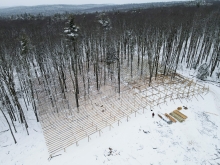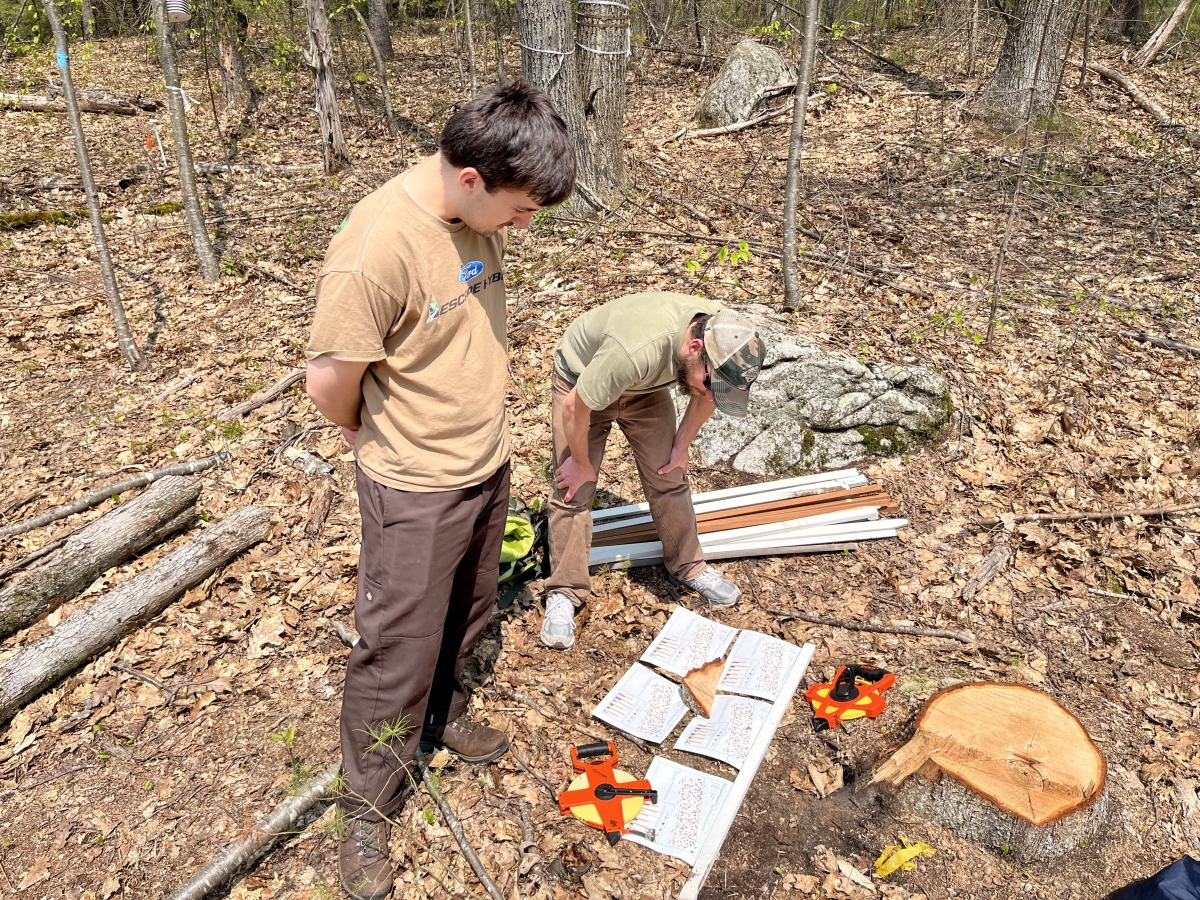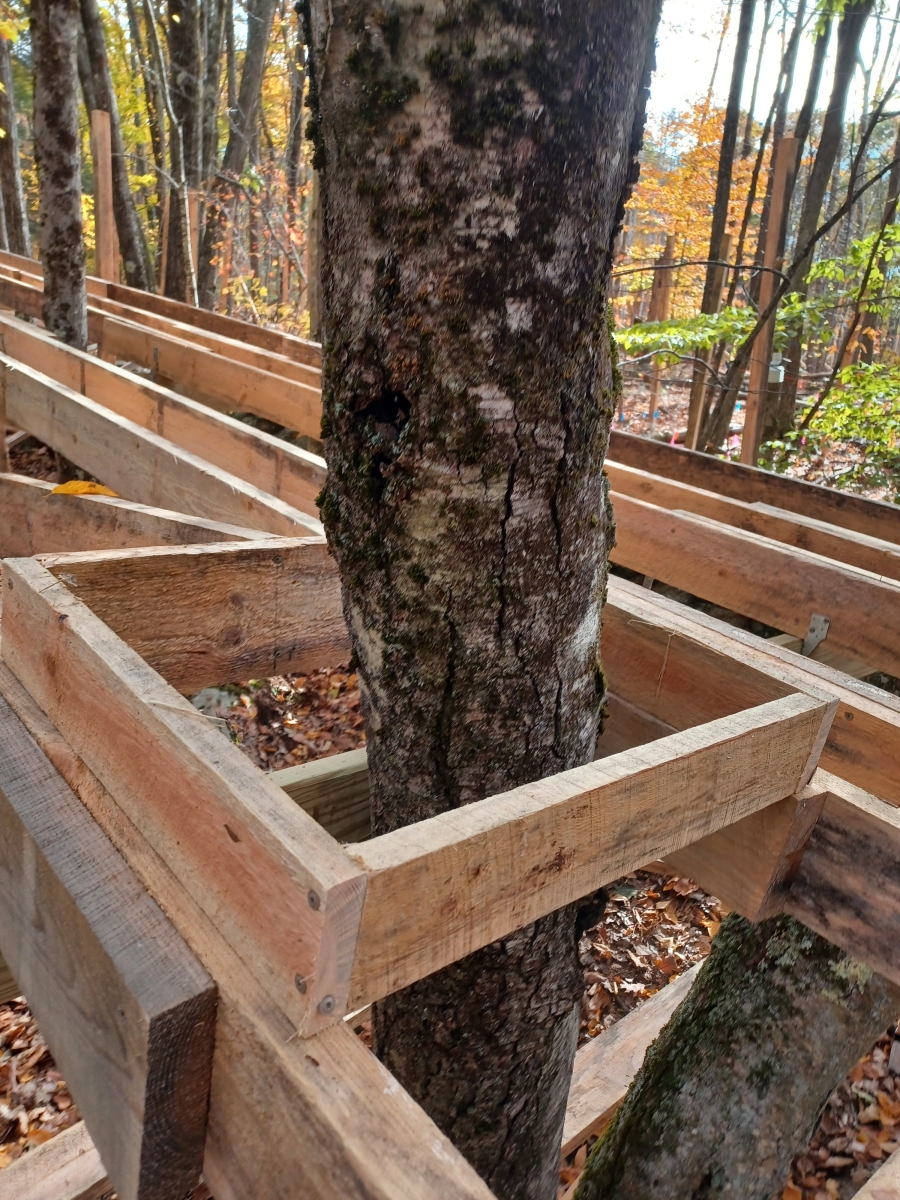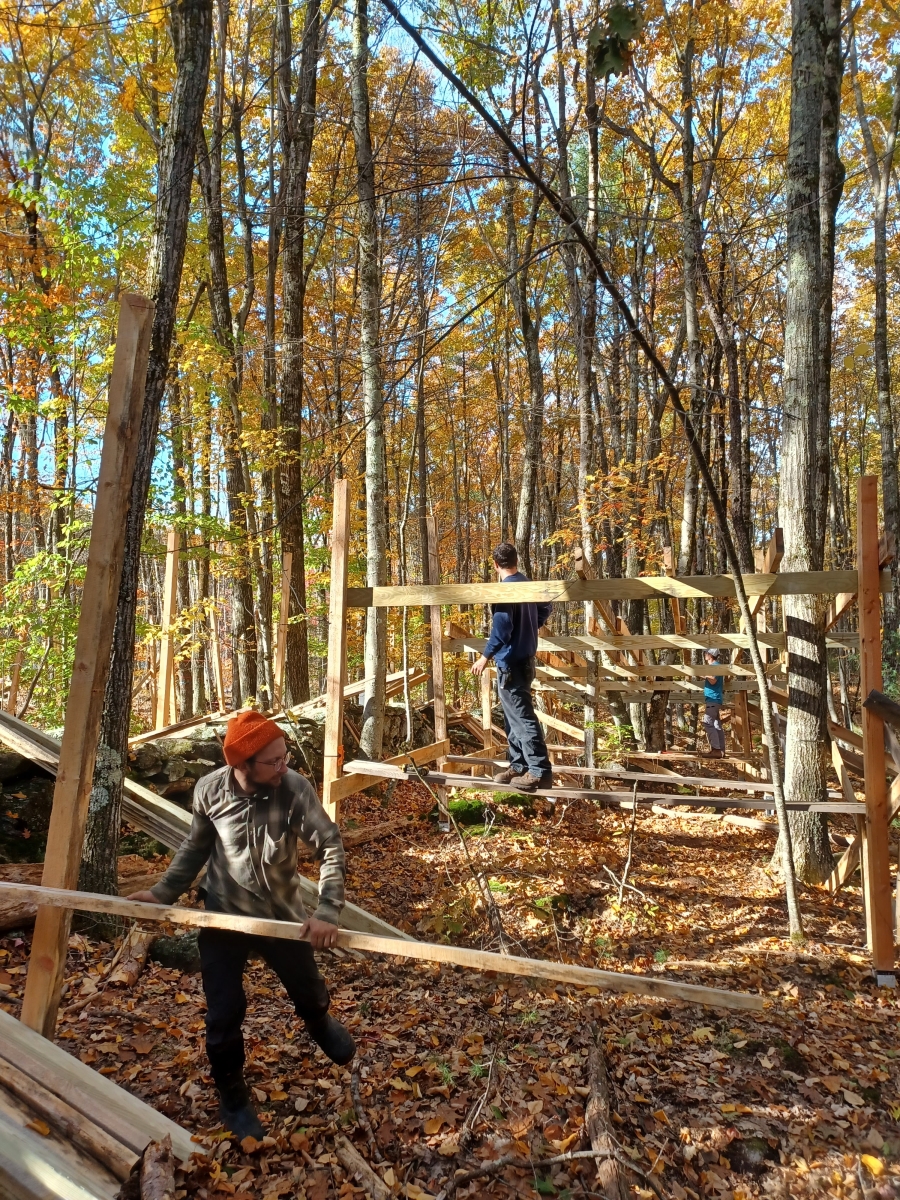You are here
Research Spotlight: The Interactive Effects Between Forest Fragmentation and Climate Change

As researchers and policymakers consider climate change mitigation strategies worldwide, it has become increasingly important to understand the nuances of forest carbon sequestration. A new study at Harvard Forest will examine the interactive effects of forest fragmentation and climate on carbon sequestration, including how these interactions shift the balance of carbon across human-dominated landscapes.
 Andrew Reinmann has been studying forest “edge effects,” or the influence of land adjacent to forests, for over 8 years, and much of this has been at Harvard Forest. Recently awarded a $1 million, five-year National Science Foundation CAREER Grant for this research, Reinmann has begun working with Harvard Forest researchers and facilities (“Woods Crew”) members to integrate a new experiment that manipulates precipitation regimes through an exclosure that blocks precipitation from roughly an acre of forest.
Andrew Reinmann has been studying forest “edge effects,” or the influence of land adjacent to forests, for over 8 years, and much of this has been at Harvard Forest. Recently awarded a $1 million, five-year National Science Foundation CAREER Grant for this research, Reinmann has begun working with Harvard Forest researchers and facilities (“Woods Crew”) members to integrate a new experiment that manipulates precipitation regimes through an exclosure that blocks precipitation from roughly an acre of forest.
Through previous research, Reinmann has determined that while trees along the forest edge grow faster than those in the interior, they remain “more negatively impacted by extreme weather like high temperatures and drought.” By integrating this new experimental data with long-term data and existing measurements at Harvard Forest, Reinmann’s research will help answer questions about why climate stressors influence trees differently depending on their neighbors.
 A visiting researcher whose home institutions are The Advanced Science Research Center and Hunter College, both at The City University of New York, Reinmann works closely with students who have limited opportunities for experiential education in ecology. In addition to bringing his students to Harvard Forest each year, Reinmann will incorporate the contributions of summer interns and PhD students into his research. A smaller, analogous experiment in New York City will allow students to draw parallels when collecting data at Harvard Forest.
A visiting researcher whose home institutions are The Advanced Science Research Center and Hunter College, both at The City University of New York, Reinmann works closely with students who have limited opportunities for experiential education in ecology. In addition to bringing his students to Harvard Forest each year, Reinmann will incorporate the contributions of summer interns and PhD students into his research. A smaller, analogous experiment in New York City will allow students to draw parallels when collecting data at Harvard Forest.
Bringing Research Plans to Life
Reinmann began conducting research at Harvard Forest nearly 15 years ago and has continued collaborations with researchers to collect data here. The high level of expertise held by the Harvard Forest Woods Crew was integral to Reinmann’s decision to choose Harvard Forest as his host site. “It is one thing to have an idea for a research project and a completely different thing to bring it to fruition,” says Reinmann.
 While researchers design large-scale projects at Harvard Forest multiple times per year, infrastructural investments of this magnitude are only undertaken every 10-20 years at the Forest, and the design of this experiment was unprecedented. “We proposed really ambitious infrastructure and were only able to provide rough specs and a few photo examples of much smaller drought experiments,” says Reinmann, “and with just that, the Harvard Forest Woods Crew was able to bring this experiment to life.”
While researchers design large-scale projects at Harvard Forest multiple times per year, infrastructural investments of this magnitude are only undertaken every 10-20 years at the Forest, and the design of this experiment was unprecedented. “We proposed really ambitious infrastructure and were only able to provide rough specs and a few photo examples of much smaller drought experiments,” says Reinmann, “and with just that, the Harvard Forest Woods Crew was able to bring this experiment to life.”
 Harvard Forest’s facilities team committed over 1,000 hours to the design & construction of the rain exclosure, which Woods Crew Manager Lucas Griffith describes as “a giant pergola in the middle of the woods.” In close collaboration with Reinmann, Griffith worked with fellow Woods Crew member Roland Meunier to design plans that would fulfill the project’s research goals. It required significant creative problem-solving, and as Griffith states, “it’s a lot of work up front but we become invested in how the project comes to life later on.” The majority of the construction was completed last fall by Woods Crew members Elijah Hill and Sam Robinson, with the final touches being completed by Kaden Quigley and Josh Johnson.
Harvard Forest’s facilities team committed over 1,000 hours to the design & construction of the rain exclosure, which Woods Crew Manager Lucas Griffith describes as “a giant pergola in the middle of the woods.” In close collaboration with Reinmann, Griffith worked with fellow Woods Crew member Roland Meunier to design plans that would fulfill the project’s research goals. It required significant creative problem-solving, and as Griffith states, “it’s a lot of work up front but we become invested in how the project comes to life later on.” The majority of the construction was completed last fall by Woods Crew members Elijah Hill and Sam Robinson, with the final touches being completed by Kaden Quigley and Josh Johnson.
“The high level of skill that exists in the Woods Crew and their flexibility and willingness to accommodate our needs are what made this experiment possible,” says Reinmann, “I am so grateful to have them on our team.”
By Emily Johnson
Photographs, from the top:
- The structure of the rain exclosure near its completion. By Ben Goulet-Scott/Let's Botanize.
- Andrew Reinmann, right, discusses field data with student JP Hellenbrand. By Clare Kohler.
- The structure of the rain exclosure near its completion. By Ben Goulet-Scott/Let's Botanize.
- Woods Crew members had to creatively solve numerous problems in order to fulfill Reinmann’s proposed research, such as this open frame around a tree trunk. By Lucas Griffith.
- Shown constructing the exclosure in the woods, Elijah Hill, left, and Kaden Quigley, right, were among the six Woods Crew members who collectively contributed over 1,000 hours to the project. By Lucas Griffith.

